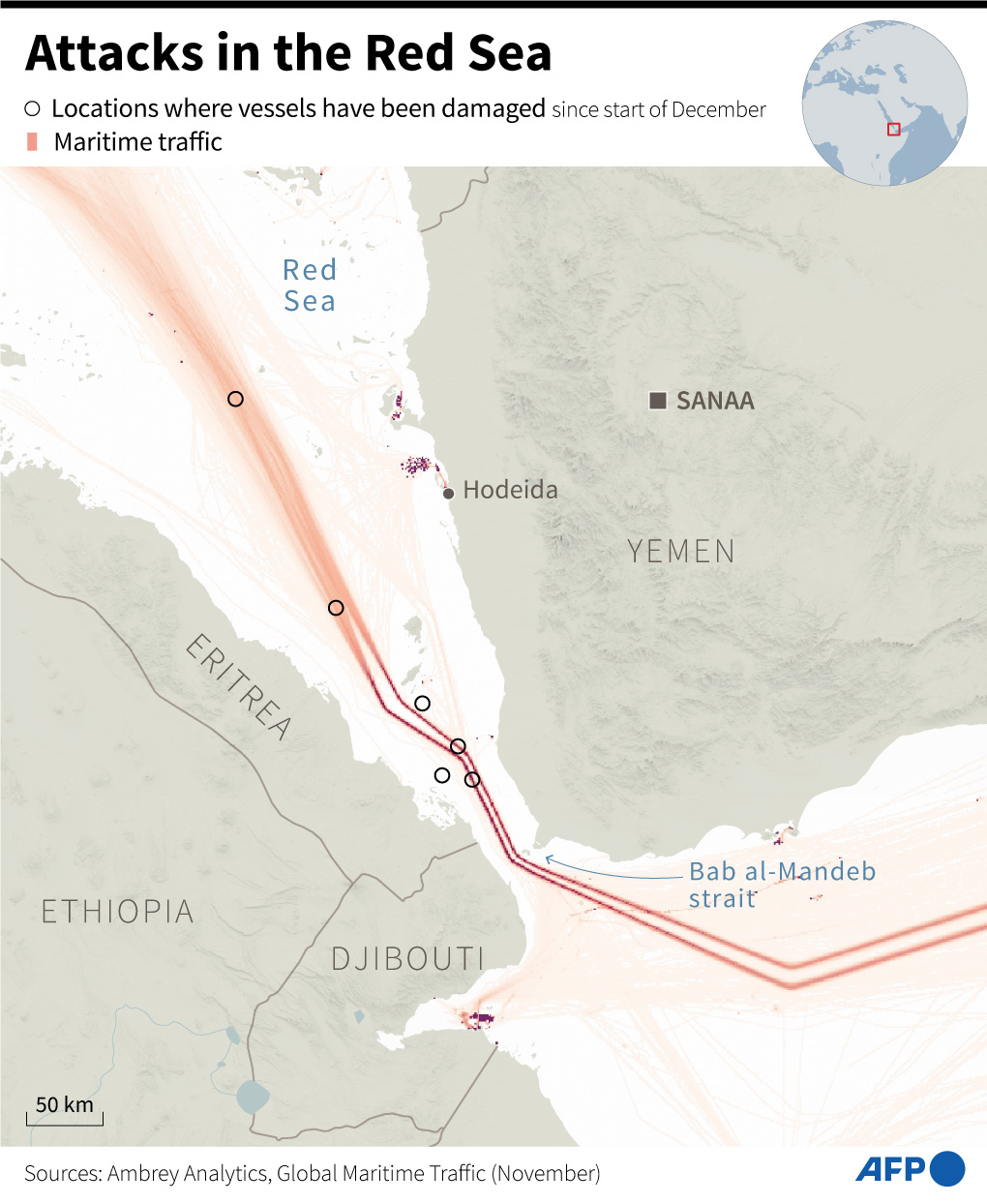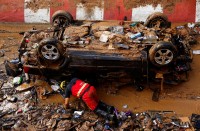
PARIS, Dec 19, 2023 (AFP)
– Following a surge in attacks claimed by Yemen’s Huthi rebels targeting cargo vessels in the Red Sea, major shipping companies have halted traffic through the crucial Bab al-Mandeb strait.
As the United States works to form a multinational naval task force to safeguard the lane, AFP looks at the importance of the route, referred to as the “Gate of Tears” in Arabic.
– Where is it ? –
The Strait of Bab al-Mandeb is a narrow waterway at the southern tip of the Red Sea, connecting with the Gulf of Aden in the Indian Ocean.
It separates Yemen on the Arabian Peninsula from Djibouti and Eritrea on the Horn of Africa.
About 100 kilometres (62 miles) long and 30 kilometres (18 miles) wide, it stretches from Ras Menheli on the coast of Yemen and Ras Siyyan in Djibouti, each representing the end-point between the Red Sea and the Gulf of Aden.
At this juncture the island of Perim divides the strait into two shipping lanes.
– Why so strategic? –
With the Red Sea acting as a key link between Europe and Asia, the strait is one of the busiest shipping lanes in the world.
Oil tankers and cargo ships arriving from the Indian Ocean pass through the waterway to reach the Red Sea and then the Suez Canal, where they enter the Mediterranean, and vice versa.
Around 20,000 ships transit every year through the Suez Canal, carrying millions of barrels of oil every day, and goods made in Asia.
According to the London-based International Chamber of Shipping (ICS) 12 percent of world ship-borne trade passes through the Red Sea. The Pentagon puts the figure at between 10 and 15 percent.
Deliveries of oil via the strait accounted for around 12 percent of oil carried by ship in the first half of 2023, while shipments of liquified natural gas along the route over the same period came to around eight percent of the commodity’s trade, according to S&P Commodity Insights.
– Highly militiarised zone –
The Gulf, where the Suez Canal and the Hormuz and Bab al-Mandeb straits are situated, is one of the most highly militarised zones in the world.
The United States has set up its only permanent base in Africa there with 4,000 troops. China in 2017 opened its first oversea military base there.
France, with 1,500 troops, has set up its biggest overseas military base there.
There has been a new military build up since the start of the war between Israel and Hamas militants in Gaza, as Yemen’s Huthi rebels have threatened to attack any ship heading to Israeli ports and stepped up their raids.
Four of the world’s biggest shipping companies — CMA CGM Group, Hapag-Lloyd, Maersk and MSC — have responded by diverting their vessels, as has oil giant BP, in a move that has sent up energy prices.
On Tuesday, the Huthis claimed responsibility for a missile strike on a Norwegian-flagged tanker,
Last month, they seized an Israel-linked cargo vessel, the Galaxy Leader, and its 25 international crew.







